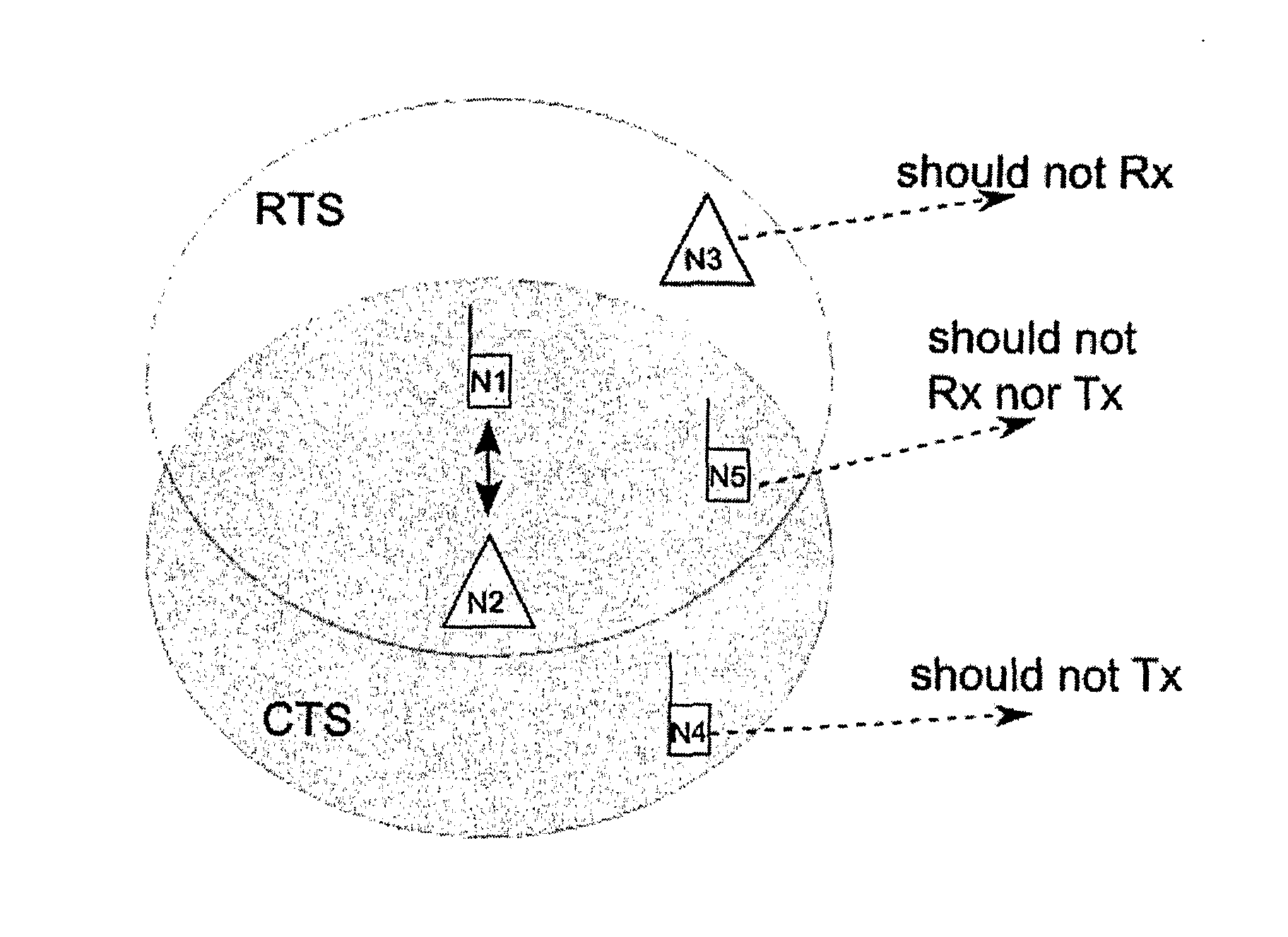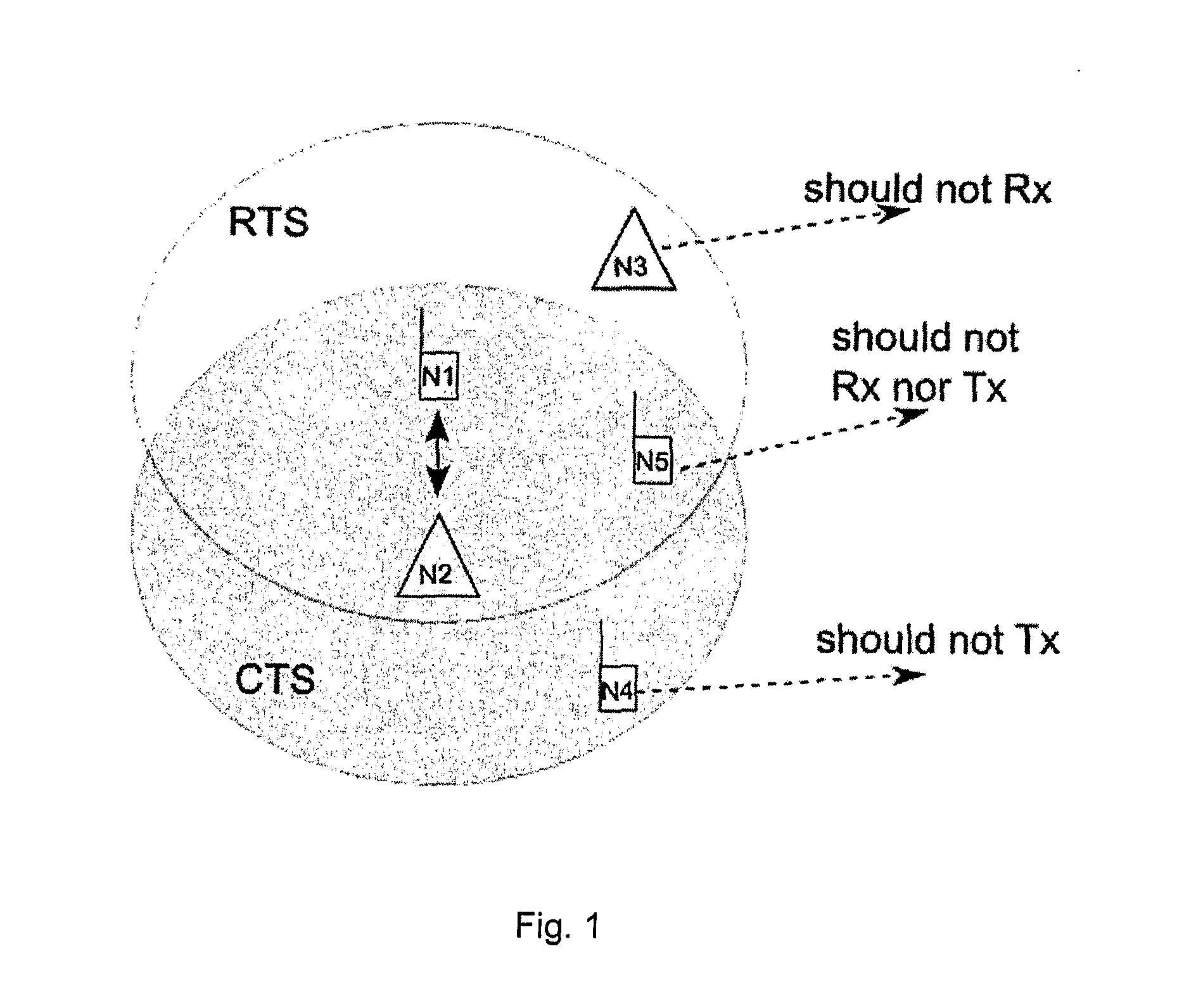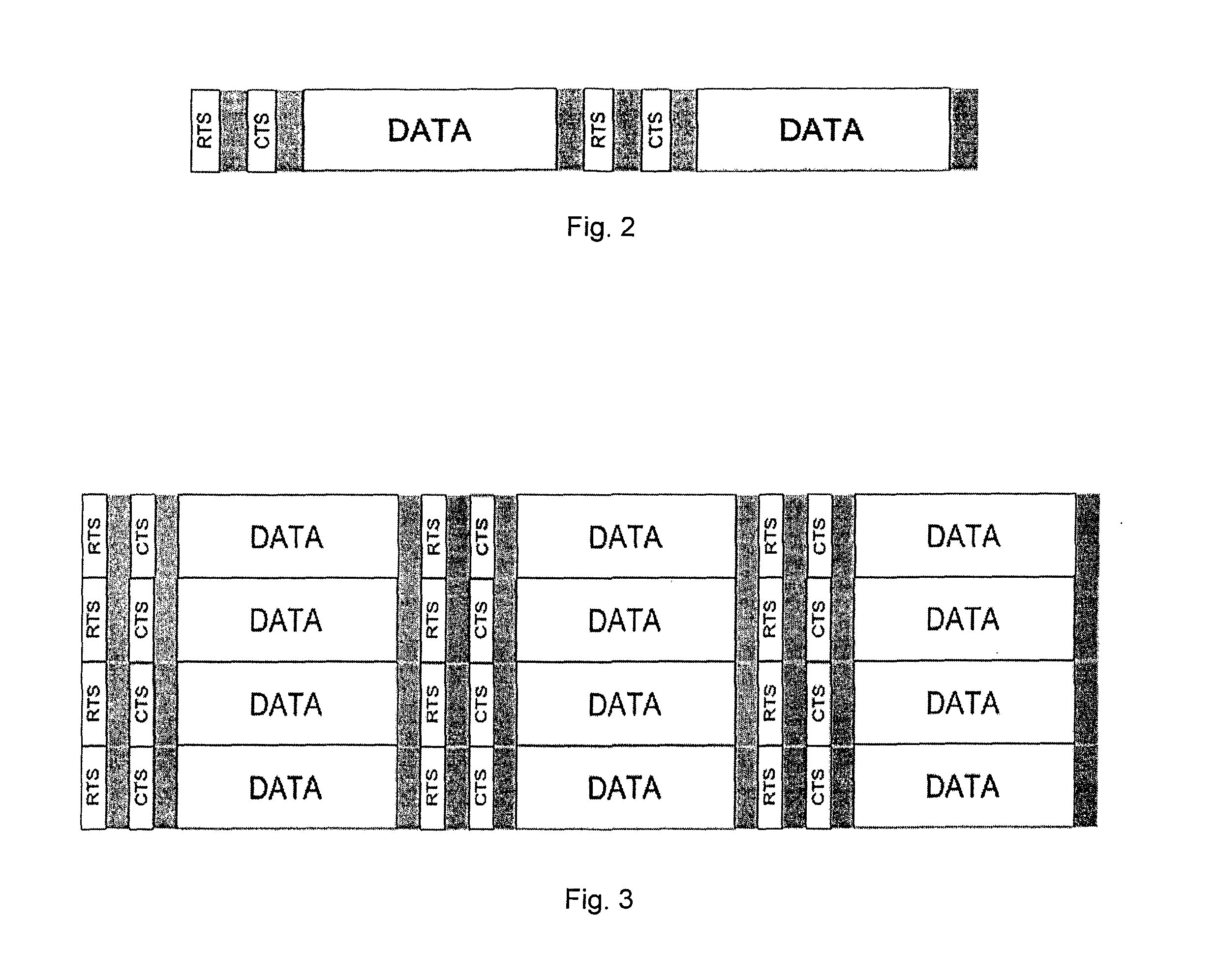Handshaking Protocol Using Bursts in OFDMA Frame Structure
a frame structure and handshake technology, applied in the field of wireless communication networks, can solve the problems of 2.4 ghz band, 802.11b and g equipment may occasionally suffer interference from microwave ovens, cordless telephones and bluetooth devices, etc., and achieve the effect of reducing interferen
- Summary
- Abstract
- Description
- Claims
- Application Information
AI Technical Summary
Benefits of technology
Problems solved by technology
Method used
Image
Examples
Embodiment Construction
[0026]Embodiments of the invention are directed to a local area radio system, such as Local Area Evolution (LAE), to complement existing cellular wide area systems, such as the Global System for Mobile communications (GSM), the Universal Mobile Telecommunications System (UMTS), High Speed Packet Access (HSPA), and Long Term Evolution (LTE). Unlike these wide area cellular systems, the local area system can utilize the license-exempt spectrum or white spaces to take advantage of the additional available bandwidth. In addition, the local area system can offer an efficient device-to-device operation mode to establish ad-hoc networks.
[0027]In contrast to classical cellular networks with sophisticated base stations (BSs) and careful frequency planning, LAE networks aim for less sophisticated and inexpensive access points (APs), as well as uncoordinated deployment. Lower cost targets in connection with a possibility that, in some cases, a terminal with limited hardware / software resources ...
PUM
 Login to View More
Login to View More Abstract
Description
Claims
Application Information
 Login to View More
Login to View More - R&D
- Intellectual Property
- Life Sciences
- Materials
- Tech Scout
- Unparalleled Data Quality
- Higher Quality Content
- 60% Fewer Hallucinations
Browse by: Latest US Patents, China's latest patents, Technical Efficacy Thesaurus, Application Domain, Technology Topic, Popular Technical Reports.
© 2025 PatSnap. All rights reserved.Legal|Privacy policy|Modern Slavery Act Transparency Statement|Sitemap|About US| Contact US: help@patsnap.com



